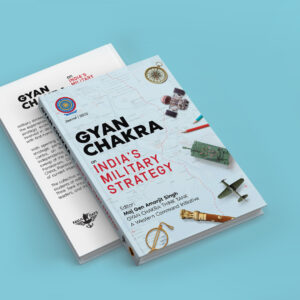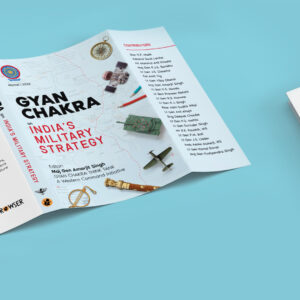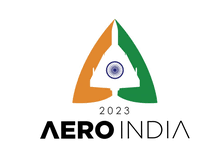
Pic Courtesy: Internet
Technology has had a profound influence on and is a major driver of innovation and evolution in air strategy. Future strategies would generally depend upon the influence of technology on warfare and the changing nature of warfare, besides the prevailing threats. Some of these aspects are discussed in the succeeding paragraphs.
Investment in Technology. Air Force is a technology-intensive service and converting technology into capability is a time-consuming process. To stay on top of the challenges, there is a need to invest in emerging technologies and ideate about their utilisation in warfare. Some of the future technologies that are impacting the air war are:
- Quantum computing.
- Hypersonic weapon systems.
- Artificial Intelligence.
- Unmanned platforms, Drones and swarm technology.
- Network-centric environment / Internet of things/system of systems.
Situational Awareness & Decision Making. One of the effects of advanced technology on air warfare is the increased pace and intensity of air operations. In such a scenario the decision-making process has to be quick to keep up with the OODA cycle. The three most important contributing factors are a high degree of situational awareness, a robust and fast, network system for information sharing, and AI-based decision support systems.
Unmanned Platforms. The use of unmanned platforms and systems is growing in warfare. This shift is expected to continue as technology advances and the capabilities of unmanned systems improve further. Drones of various sizes and capabilities are taking over the tasks of conventional platforms. Their utilisation is spread across the entire spectrum of threats ranging from sub-conventional, and conventional to long-range attacks. Investment in anti-drone systems is also a need of the hour.
Loyal Wing Man Concept. Both man and unmanned platforms have their respective advantages and disadvantages. The thought process for the next generation of platforms is to harness the advantages of both and develop networked systems, wherein, both can work in an integrated manner. Research is going on in many countries on the “Loyal wingman” concept. HAL in India is also working on the ICATs program on similar lines.
Sixth Generation Aircraft. Sixth-generation aircraft are still in the development phase however, based on current trends in air technology, sixth-generation aircraft will likely have several key features that will shape air strategy in the future. They are likely to have increased automation with advanced AI and machine learning algorithms that will enable autonomous decision-making and allow them to adapt to changing situations quickly. They would also have enhanced stealth capabilities making them virtually invisible to radar and other detection systems. Integrated sensor systems in these aircraft will provide comprehensive situational awareness and the ability to engage targets with great precision. Overall, sixth-generation aircraft are expected to have a significant impact on air strategy in the future, with their advanced capabilities enabling air forces to operate with greater autonomy and to strike enemy targets with unprecedented precision and speed. However, as with any new technology, there may also be challenges associated with the introduction of sixth-generation aircraft, including the need to develop new tactics, training programs, and support infrastructure to fully realize their potential.
Hypersonic Weapons. The development of hypersonic weapons is likely to have a significant impact on air strategy. Hypersonic weapons provide new opportunities for rapid response and long-range strike capabilities with precision. They also pose new challenges in terms of protection and air defence. The high speed and unpredictability of hypersonic weapons will require the development of new air defence strategies, as traditional air defence systems may be unable to detect or intercept these weapons. This could lead to the development of new technologies, such as directed energy weapons or advanced sensors, to counter the threat posed by hypersonic weapons. Also, protective infrastructure would be required which can withstand the destructive power of these weapons.
New Domains of Warfare. The domains like cyber, space, electronics and information are coming into the influence of warfare. China’s formation of a Joint Strategic Support Force (JSSF) as a separate service, with defensive and offensive capabilities, in above mentioned four domains, indicates future challenges. Reorientation is required in IAF to deal with these changes.
Grey Zone Operations. Grey zone operations are operations in the contested arena somewhere between routine statecraft and open warfare. These are becoming a norm in modern-day warfare. Both the adversaries of India are resorting to these operations regularly. Air power besides offensive use can also be effectively utilised in many ways, in non-conventional hostile situations categorised above. Various aspects of grey zone operations need to be deliberated from the point of view of airpower involvement. A certain amount of reorientation would be required in the application of airpower in these grey zone situations supported by capability enhancement in certain fields.
Space-Based Capabilities. The term airpower has changed to aerospace power with the aerial warfare envelope expanding to the domain of space. Space-based systems and applications are embedded in every aspect of aerial warfare. In Grey zone warfare the involvement of space-based equipment and systems is on an even larger scale. Space-based systems are becoming increasingly important in air warfare, providing capabilities such as navigation, targeting, communication, early warning of missile launches and space-based surveillance. The integration of these systems with air assets is expected to continue, providing new opportunities for offensive and defensive operations.
Defence Diplomacy. Defence diplomacy is conducted utilizing several defence activities like defence cooperation, exchange visits, joint exercises, training, and loan or gift of equipment etc. Air Force has a big role in defence diplomacy. It is an effective tool for political signalling and strategic coercion. The escalation matrix can be developed by a combination of the number and extent of these defence activities. Multi-lateral, multi-service and multi-domain exercises are essential for defence cooperation, not only during hostilities but even for grey zone operations during peace. Even without a military alliance certain degree of interoperability with friendly foreign forces is desirable.
Self-Reliance, Indigenisation and Make in India. Indian Air Force has always encouraged the development of indigenous defence production capability and it is one of its key result areas. It has played an important role in creating an aerospace ecosystem in India and has been operating indigenously built aircraft and also aircraft built in India under licence production. This has given impetus to indigenous industry in the past and will continue to support it in future. The important thing to remember is that while supporting self-reliance the minimum level of deterrence capability needs to be maintained at all times. Also, the balance between quality and quantity needs to be maintained all the time.
Bottom Line
Learn from Past,
Deal with Present,
Plan for future.
Suggestions and value additions are most welcome
For regular updates, please register here
Subscribe
References and credits
To all the online sites and channels.
Disclaimer:
Information and data included in the blog are for educational & non-commercial purposes only and have been carefully adapted, excerpted, or edited from sources deemed reliable and accurate. All copyrighted material belongs to respective owners and is provided only for purposes of wider dissemination.




